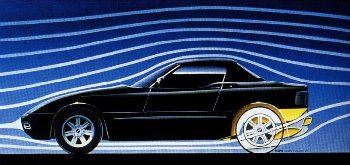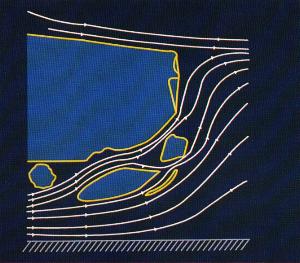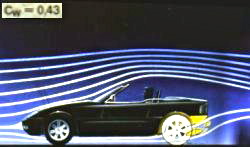
|
Rear downforce is created by a low pressure area generated by the effect of the Aerofoil section of the transverse rear silencer box, and it's nearby body parts which work as Aerofoil slats. Frontal downforce is created by a high pressure area at the front edge of the bonnet (hood). The forward part of this body section is a concave curve, before turning convex as is more normal. A high pressure area is created just above the front wheels.
|

|
Air flow pattern around the Z1 rear exhaust box and body panels. The rear silencer is an inverted wing, and the rear fender and undertray work as aerodynamic slots or flaps to increase the negative
lift at road speeds. |

|
Most convertibles of the 80s were troubled by poor aerodynamics and chassis rigidity. The Z1 on the other hand had a good drag coefficient at 0.36 with the roof up and 0.43 when the roof is down, thanks to a smooth body and a flat composite undertray covering the bottom of the car. The undertray drew air towards the integral rear diffuser, which pulled the car towards the ground, resulting in stability at high speed without needing spoilers. Diffusers are common today, but in 1988 it was a unique feature on a BMW roadster. |
|

